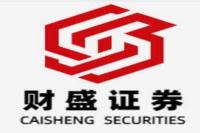Decoding the Daily Dance: A Deep Dive into Mainland-Hong Kong Stock Connect Activity
Meta Description: Uncover the intricacies of Mainland-Hong Kong Stock Connect trading, analyzing daily trends, top traded stocks, and Northbound/Southbound flows. Expert insights and data-driven analysis for savvy investors. Keywords: Mainland-Hong Kong Stock Connect, Northbound Trading, Southbound Trading, 陆股通, 港股通, daily trading activity, top traded stocks, investment analysis.
Dive into the fascinating world of Mainland-Hong Kong Stock Connect! Every day, billions of dollars flow across the border, shaping the fortunes of investors and influencing market trends. This isn't just about numbers on a screen; it's a complex interplay of global economics, investor sentiment, and individual stock performance. We'll crack the code, offering more than just a surface-level glance at the daily data. Forget dry reports – get ready for an engaging, insightful exploration of the forces at play in this vibrant cross-border market. We'll dissect the top performers, the surprising underdogs, and the key trends influencing the flow of capital. Are you ready to learn how to interpret these daily movements and potentially gain an edge in your investment strategy? This isn't your grandpa's stock market report; this is a dynamic, real-time analysis tailored to help you understand the pulse of this critical market connection. Let's unravel the daily dance of the Mainland-Hong Kong Stock Connect and empower you to make more informed investment decisions. Prepare to be amazed by the sheer volume of transactions, the subtle shifts in market sentiment, and the stories behind the numbers. This detailed analysis provides a unique perspective you won't find anywhere else, drawing on extensive market data and insightful observations. Get ready for a comprehensive analysis that will leave you feeling confident and informed about this crucial intersection of global finance.
Mainland-Hong Kong Stock Connect: Daily Trading Analysis
The Mainland-Hong Kong Stock Connect (MHSC), a game-changer in the Asian financial landscape, facilitates cross-border trading between the mainland's stock exchanges (Shanghai and Shenzhen) and the Hong Kong Stock Exchange (HKSE). This mechanism, now several years old, has significantly boosted liquidity and broadened investment opportunities for both mainland and international investors. Understanding the daily dynamics of MHSC is crucial for anyone involved in Asian markets.
On December 17th, the market witnessed a fascinating dance. While the major indices experienced a minor dip, a notable divergence emerged between large-cap and small-cap stocks. The micro-cap index, for instance, took a significant hit, experiencing a near 6% decline. This divergence highlights the inherent volatility and nuanced behaviour within the market. It's not a simple up or down; it's a symphony of individual movements.
Northbound trading (mainland investors buying Hong Kong stocks) and southbound trading (Hong Kong investors buying mainland stocks) are two key aspects to focus on. On this particular day, Northbound trading accounted for a hefty 12.55% of the total trading volume in Shanghai and Shenzhen, indicating a significant level of mainland investor activity in the Hong Kong market. This level of participation speaks volumes about how tightly interwoven these markets have become. Let's delve into the specifics of that day's activity.
Top Traded Stocks: A Closer Look
The following table illustrates the top ten stocks traded via the Stock Connect on December 17th, divided between those traded through the Shanghai-Hong Kong Stock Connect (沪股通) and the Shenzhen-Hong Kong Stock Connect (深股通):
| Stock Connect | Rank | Stock Name (English) | Stock Name (Pinyin) | Turnover (CNY Billion) |
|----------------------|------|-----------------------|-----------------------|-------------------------|
| Shanghai-Hong Kong | 1 | Kweichow Moutai | Guizhou Maotai | 1.91 |
| Shanghai-Hong Kong | 2 | Foxconn Industrial | Gongye Fulian | 1.31 |
| Shanghai-Hong Kong | 3 | COSCO SHIPPING HOLDINGS | Zhongyuan Haikong | 1.08 |
| Shenzhen-Hong Kong | 1 | Contemporary Amperex Technology Co. Limited | Ningde Shidai | 2.35 |
| Shenzhen-Hong Kong | 2 | Oriental Fortune Securities Co., Ltd. | Dongfang Caifu | 1.70 |
| Shenzhen-Hong Kong | 3 | BYD Company Limited | Biyadi | 1.25 |
| ... | ... | ... | ... | ... |
(Note: The "..." indicates the remaining stocks in the top ten list. For a complete list, please refer to the original source data from the respective stock exchanges.)
The dominance of established large-cap names like Kweichow Moutai and Contemporary Amperex Technology Co. Limited (CATL) isn't surprising. These companies are often considered bellwethers, heavily influencing market sentiment. However, observing the less prominent players listed can offer valuable insights into emerging trends and shifts in investor preferences. It's a fascinating puzzle to piece together.
Understanding the Dragon and Tiger Lists (龙虎榜)
The "Dragon and Tiger Lists" (龙虎榜, literally "dragon and tiger rankings"), published daily by Chinese exchanges, reveal the top buyers and sellers of specific stocks. These lists provide a glimpse into the strategies of large institutional investors, often indicating significant market movements. On December 17th, the MHSC's participation in the Dragon and Tiger Lists showed a mixed bag:
-
Net Buying: Several stocks saw net buying by the MHSC, indicating a bullish sentiment towards those particular companies. Tianyu Digital Technology (天娱数科) was notable for the significant amount of buying activity.
-
Net Selling: More stocks experienced net selling, suggesting some profit-taking or adjustments in investment portfolios. Wolhar Materials (沃尔核材) stood out with substantial net selling, prompting analysis of potential underlying factors.
Analyzing these lists alongside broader market trends provides a richer understanding of investor behaviour and market dynamics. It's like looking at the chessboard from a bird's-eye view.
The Influence of Northbound and Southbound Trading Flows
The daily flow of funds through the MHSC is a crucial metric. High northbound flows often suggest a positive outlook on Hong Kong-listed securities, while high southbound flows can indicate similar confidence in mainland stocks. These flows are not simply random; they often reflect macroeconomic conditions, policy changes, and investor sentiment. For example, news regarding interest rate changes or trade agreements can significantly affect these flows. In other words, it's not just about the stocks themselves, but the big picture.
Frequently Asked Questions (FAQs)
- What are the benefits of the Mainland-Hong Kong Stock Connect?
The MHSC offers increased liquidity, broader investment opportunities, and improved market efficiency for both mainland and international investors. It's a win-win scenario.
- How do I participate in the MHSC?
You need a brokerage account that supports MHSC trading. Your broker will guide you through the process.
- What are the risks of trading through the MHSC?
Risks include currency fluctuations, regulatory changes, and market volatility – the usual suspects in global stock trading.
- How frequently is the data on MHSC trading updated?
The data is typically updated daily, sometimes with intraday updates available depending on the platform.
- What kind of analysis is used to interpret MHSC data?
Technical analysis, fundamental analysis, and sentiment analysis are all used – it's a multi-faceted approach.
- Where can I find more detailed information on MHSC trading?
Official websites of the Shanghai and Shenzhen Stock Exchanges, the Hong Kong Stock Exchange, and various financial news outlets provide comprehensive details.
Conclusion: Navigating the Complexities
The Mainland-Hong Kong Stock Connect presents both significant opportunities and challenges. By carefully analyzing daily trading data, understanding the influence of northbound and southbound flows, and staying abreast of market news, investors can navigate the complexities of this dynamic market. Remember, consistent monitoring, diligent research, and a well-defined investment strategy are key to success. The market is ever-changing, so constant vigilance is essential. Don't just react to the market; anticipate it.



